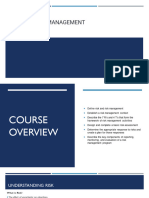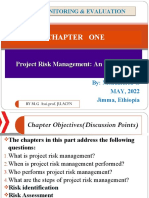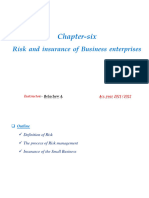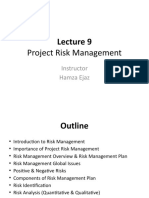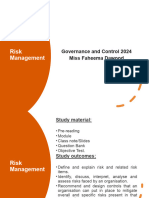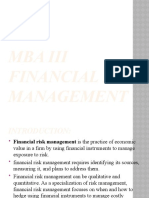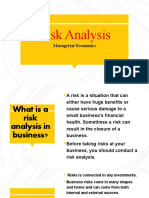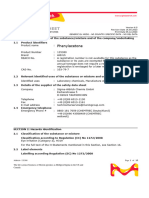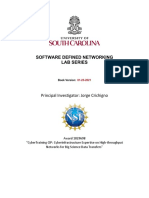Module 2
Understanding Project Phases and Risk Classification
1
� Project Definition
A project is a series of tasks that need to be completed
to reach a specific outcome.
A project can also be defined as a set of inputs and
outputs required to achieve a particular goal
2
�The 5 Phases of Project
Management
3
� What Does Process Analysis Mean?
Process analysis is an ongoing improvement process
where organizations analyze the way they do things in
order to find more efficient methods to perform a
particular task.
4
�Remember
5
� What is Risk?
An undesirable situation or circumstance that has both a
likelihood of occurring and a potentially negative
consequence.
6
�Risk Vs Opportunity
7
� Risk Management
The identification, evaluation, and prioritization of risks
followed by coordinated and economical application of
resources to minimize, monitor, and control the
probability or impact of unfortunate events or to
maximize the realization of opportunities.
8
� Classifying Risk
Strategic Risk :
A possible source of loss that might arise from the detection of an
unsuccessful business plan. (For example, strategic risk might arise
from making poor business decision, from the substandard execution of
decisions, from inadequate resource allocation, or from a failure to
respond well to changes in the business environment.
9
� Classifying Risk
Operational Risk:
Is the risk that is not permanent in financial, systematic or market-
wide risk. It is the risk remaining after determining financing and
systematic risk, and includes risks resulting from breakdowns in
internal procedures, people and systems.
10
� Classifying Risk
Compliance risk
The risk of legal or regulatory sanctions, material financial loss, as a
result of its failure to comply with laws, regulations, rules, related self-
regulatory organization standards, and codes of conduct applicable to
its business and other activities.
11
� Classifying Risk
Reporting risk
The communication of risk information in all phases of the risk
management process, namely identification, measurement,
management and monitoring. Risk reporting includes at least the
reporting of:
Total exposures against targets/strategies;
compliance with limit system;
key risk indicators; and
review findings.
12
� Classifying Risk
Reputational risk:
The risk of harm of the group's image in the community or the long-
term trust placed in the group by its shareholders as a result of a
variety of factors, such as the group's performance, strategy execution,
ability to create shareholder value, or an activity, action taken by the
group. This may result in loss of business and/or legal action.
13
�Other Risk Categories
14
� Residual Risk
Residual risk is the threat that remains after all efforts to
identify and eliminate risk have been made.
There are four basic ways of dealing with risk: reduce
it, avoid it, accept it or transfer it.
Since residual risk is unknown, many organizations
choose to either accept residual risk or transfer it -- for
example, by purchasing insurance to transfer the risk to
an insurance company.
15
�The Diagram
16
�The Diagram
17
� Discussion
What is the Risk in Devaluation the Currency and what is
the Opportunity ?
18




